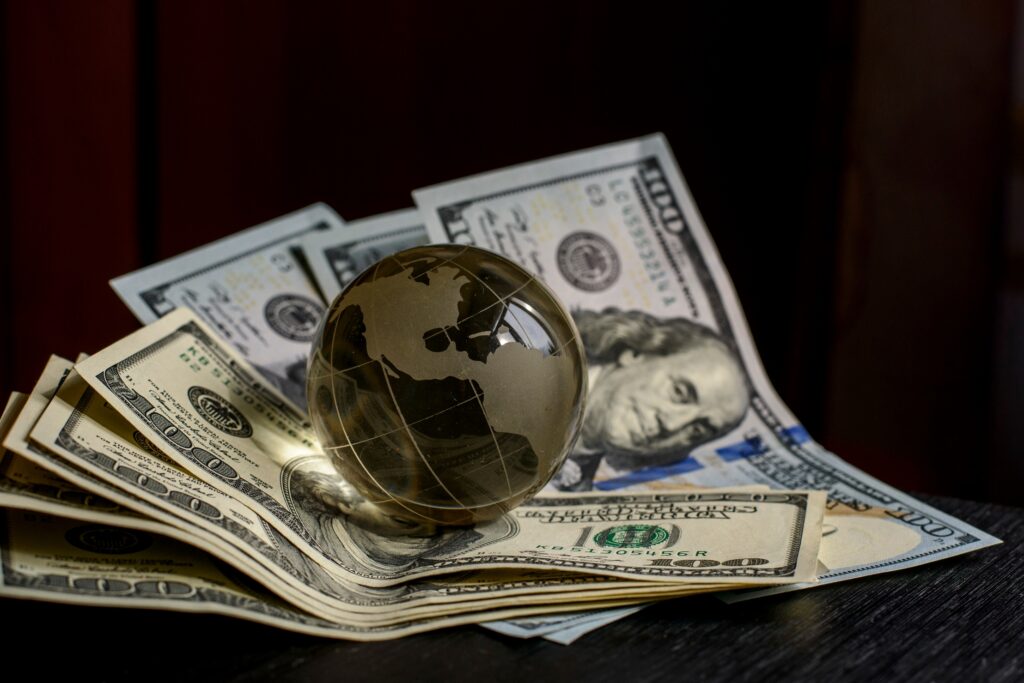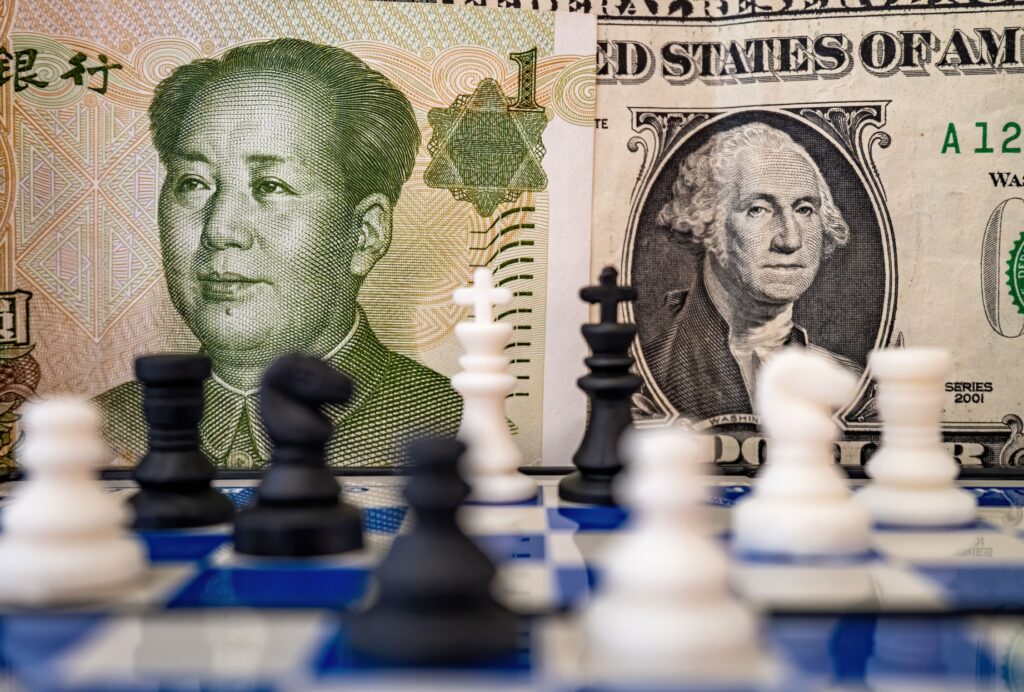
Global De-Dollarization: Navigating the Shift
Global de-dollarization refers to the gradual movement away from the predominance of the U.S. dollar in the international financial system. Traditionally, the dollar has held a central position as the world’s reserve currency, facilitating global trade and investment due to its perceived stability and ubiquity. This privileged status has granted the United States numerous economic advantages, including lower borrowing costs and the ability to influence global monetary policy.
The mechanisms of de-dollarization include the adoption of other currencies for international trade, the accumulation of non-dollar-denominated assets by central banks, and the establishment of bilateral agreements that bypass the dollar.
This movement is gaining momentum in part due to technological and financial innovations, which offer new ways to conduct transactions without the need for traditional currency intermediaries. The consequences for global markets could be substantial, potentially leading to increased currency volatility and a reshaping of international economic relations. The transition may reflect a broader realignment of the global economy as new alliances form and nations seek to assert greater financial autonomy.
Key Takeaways
- Nations are moving away from the U.S. dollar to diminish reliance and influence.
- Alternative currencies and financial technologies are facilitating this shift.
- The trend may lead to significant changes in global trade and economic power dynamics.
Historical Context of the U.S. Dollar as the World’s Reserve Currency

The U.S. dollar’s status as the world’s reserve currency is anchored in historical events that have shaped the global economy. These pivotal moments, ranging from international agreements to economic trends, have solidified the dollar’s dominance in the world’s financial system.
Bretton Woods Agreement and Post-War Economy
In 1944, representatives from 44 countries convened in Bretton Woods, New Hampshire, to establish a new economic order post-World War II. The resultant Bretton Woods Agreement founded the International Monetary Fund (IMF) and the World Bank.
Crucially, it pegged global currencies to the U.S. dollar, which was in turn linked to gold at a fixed exchange rate of $35 per ounce. This framework not only underscored the U.S. economy’s resilience but also anchored the dollar as the central currency in global trade and finance.
Rise of the Petrodollar
In the 1970s, a tectonic shift occurred after President Nixon severed the tie to gold. The U.S. began negotiating deals with oil-producing countries in the Middle East, leading to the creation of the petrodollar system.
Countries buying oil from these producers had to purchase U.S. dollars first, thereby increasing the demand for the dollar. This development was critical in marching the dollar towards becoming the primary currency for international transactions, further strengthening the U.S. economy.
Past Financial Crises and Dollar Dominance
Throughout various financial crises, including those in the late 20th and early 21st centuries, the U.S. dollar has demonstrated remarkable resilience, often emerging as a safe haven for international investors.
For instance, during the 2008 financial crisis, despite considerable turmoil on Wall Street, demand for the dollar soared rather than diminished. Coverage by the Wall Street Journal highlighted that rather than eroding confidence in the dollar, crises have tended to reinforce its dominance, reaffirming its role as the primary global reserve currency.
Mechanisms and Impact of De-Dollarization

De-Dollarization involves the shift away from the US dollar in international trade and finance, a move which has notable implications for trade invoicing, central bank reserve management, and the overarching global financial system.
Trade Invoicing and Local Currencies
A central aspect of de-dollarization is the increased use of local currencies in trade invoicing.
By invoicing exports and imports in their own or other national currencies, countries can reduce their reliance on the greenback. This practice affects international trade by potentially lowering transaction costs and minimizing exposure to US dollar.
Central Bank Reserve Management
Central banks play a crucial role in the process by altering their global reserves composition.
A gradual reduction in their holdings of US dollar-denominated assets, in favor of alternative currencies, indicates a move towards de-dollarization. This shift impacts their management of reserves and may aim to protect against currency concentration risks and diversify their portfolios. Foreign Central Banks have purchased more gold in the past year than they have in the past 50 years. This only solidifies the fact that the world is moving away from the dollar as the world reserve currency.
Impact on Global Financial System
The global financial system could face significant changes with de-dollarization.
The relative importance of the US dollar as a global reserve currency could diminish, affecting finance markets around the world.
While the potential decline in reliance on the US dollar in international finance systems might redistribute financial power, it also introduces complexity in assessing the valuation and stability of diversifying reserve assets.
Global De-Dollarization Movements and Alliances

Recent shifts in global economics have illuminated the various efforts by countries and alliances to reduce their reliance on the US dollar. Key players in these movements include BRICS nations, China, and Russia, each advancing their own alternative currencies to challenge dollar hegemony.
BRICS Nations and Alternative Currencies
BRICS, comprising Brazil, Russia, India, China, and South Africa, is exploring new transactions methods that circumvent the US dollar.
Given the economic sanctions that member countries like Russia have faced, the BRICS countries see a compelling reason to develop and encourage the use of alternative currencies for their transactions.
One example is the push for increased intra-BRICS trade using their own national currencies rather than the US dollar, reducing the group’s vulnerability to external economic pressures.
China and the Role of the Yuan
China has been steadily positioning the Chinese yuan as a viable alternative to the dollar in international trade.
This move is underpinned by a desire to reflect China’s growing economic clout on the world stage.
Initiatives include promoting the yuan for trade and as a reserve currency, and establishing swap agreements with other countries.
Efforts towards internationalization of the yuan are visible, signaling China’s intention to play a more dominant role in the global financial architecture.
Russia’s Pivot Away from the Dollar
Russia, in response to Western sanctions and the desire for economic sovereignty, has been actively reducing its reliance on the US dollar.
The ruble has been positioned as an alternative for bilateral trade, and Russia has been boosting its gold reserves as a hedge against dollar instability.
Beyond this, domestic markets in Russia are encouraged to set prices in rubles, further diminishing the role of the US dollar in its economy.
Consequences of De-Dollarization for Global Markets

The gradual move away from the US dollar in international trade and finance could catalyze significant shifts in global economic power and provoke changes in how global markets function.
Currency Wars and Economic Power Shifts
In an era of de-dollarization, nations may engage in currency wars as they attempt to use their currencies to gain a competitive advantage in global exports.
This competition can lead to a substantial reordering of economic power, with emerging markets potentially enhancing their positions on the world stage.
Oil Transactions and the End of Petrodollar
The hegemony of the dollar in oil transactions—often referred to as the petrodollar system—faces challenges in a de-dollarized world.
Countries may opt for alternative currencies to price and settle oil trades, which could diminish the demand for US dollars and impact commodity markets worldwide.
Effects on International Monetary Fund and Global Trade
As de-dollarization progresses, the role of the International Monetary Fund (IMF) may evolve, affecting the institution’s influence on global trade.
Adjustments to the Special Drawing Rights (SDR) basket could be necessary, potentially incorporating a broader mix of currencies to reflect the new landscape of global finance.
Technological and Financial Innovations Influencing De-Dollarization

Technological advancements and shifts in financial markets are pivotal forces in the trend toward global de-dollarization. These innovations offer alternatives to traditional dollar-based systems and reshape investment dynamics worldwide.
Digital Currencies and Blockchain
Central bank digital currencies (CBDCs) are emerging as significant players in the financial landscape, offering an official digital form of a country’s fiat currency.
Countries are leveraging blockchain technology to strengthen their currency systems and bypass traditional dollar-reliant mechanisms such as SWIFT payments.
Their inherent features promote efficiency and may reduce the need for the U.S. dollar in international trade.
Capital Controls and Stock Market Dynamics
Strict capital controls employed by some nations can lead to reduced reliance on the U.S. dollar.
These regulatory measures significantly influence stock market performance and international investment flows. As such, they play a role in a country’s monetary policy and its strategic approach to de-dollarization.
Changing Nature of Global Investments
Investors are increasingly considering a variety of assets beyond traditional dollar-denominated bonds and equity markets.
Diversification into physical assets like gold, silver, and platinum can help mitigate exposure to dollar volatility.
Frequently Asked Questions
De-dollarization poses complex implications for the global economy, with each question delving into aspects of economic stability, strategic benefits and disadvantages, and the potential reshaping of international finance.
What are the potential consequences of de-dollarization for the global economy?
De-dollarization could lead to a more multicurrency system that may reduce the hegemony of the US dollar. It is suggested that this could cause increased exchange rate volatility and affect global trade dynamics.
How might de-dollarization impact the economic stability of countries that have traditionally relied on the US dollar?
Countries heavily reliant on the US dollar could face economic instability as they transition to other currencies. They might encounter short-term financial turbulence and liquidity issues.
What are the advantages and disadvantages of countries shifting away from the US dollar as their reserve currency?
Shifting away from the US dollar could reduce a country’s exposure to US economic policy changes. However, it could also lead to challenges in establishing an alternative currency that is as widely accepted and as liquid as the dollar.
How could the trend toward de-dollarization affect the value and status of the US dollar as the world’s reserve currency?
The US dollar’s value might depreciate if de-dollarization gains momentum. Meanwhile, its status as the world’s reserve currency may diminish if alternative currencies gain greater acceptance.
What are the driving factors behind some countries’ decisions to de-dollarize?
Countries may choose to de-dollarize due to geopolitical tensions, economic sanctions, or the desire to boost their own currencies and reduce reliance on the US dollar.
What could be the long-term effects on the United States economy if de-dollarization continues to spread globally?
The US economy might face reduced demand for its currency and securities. This could impact the country’s borrowing costs.
It could also affect its ability to influence global economic policies.


